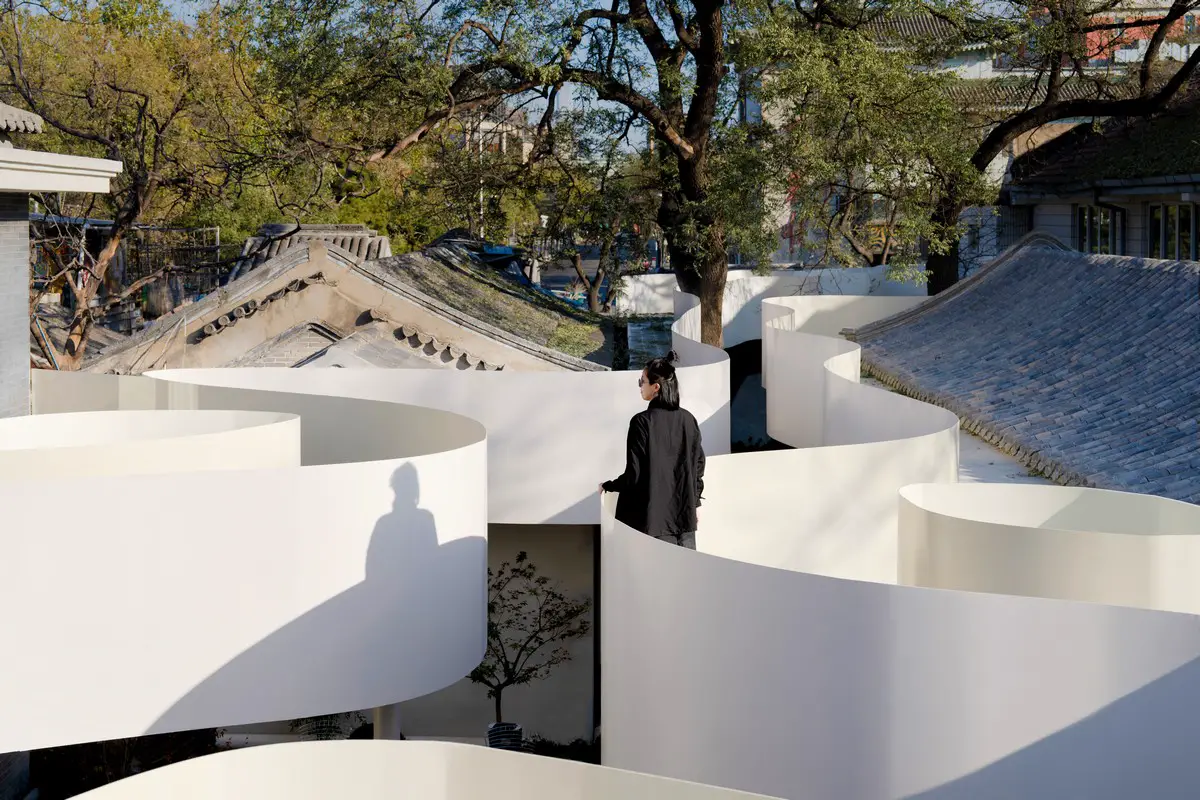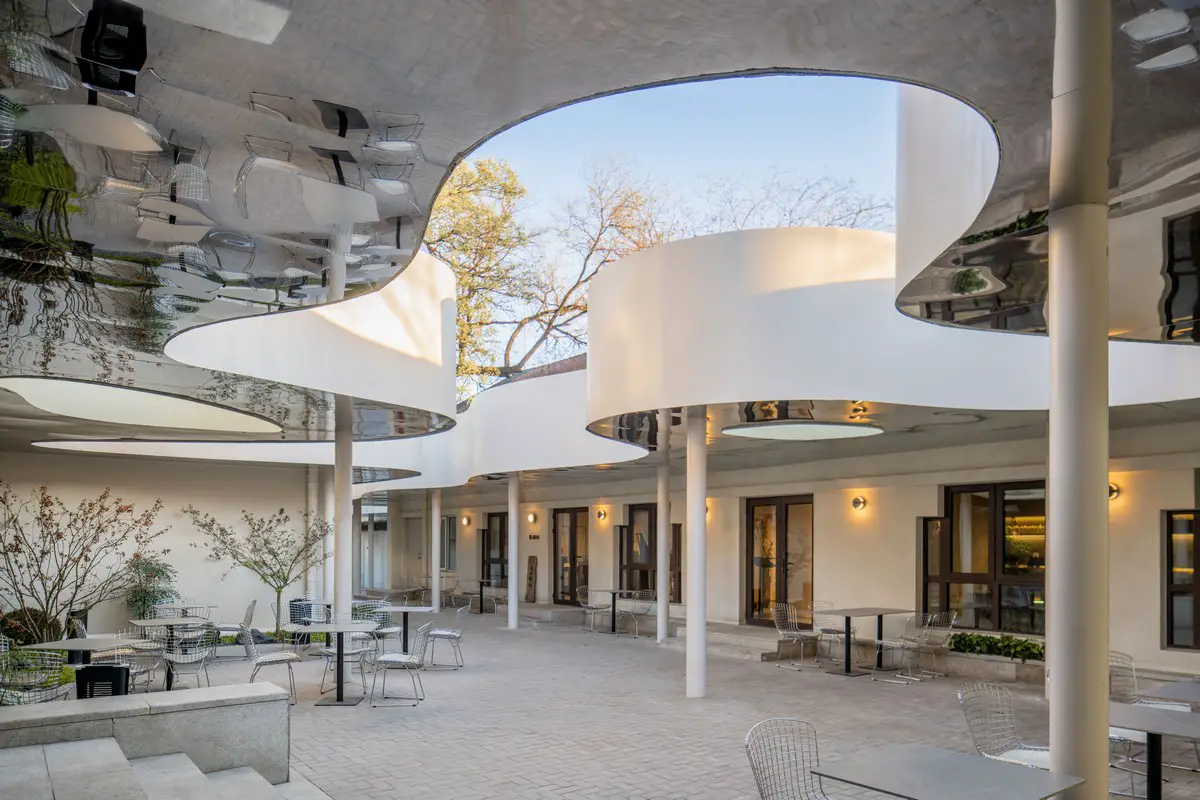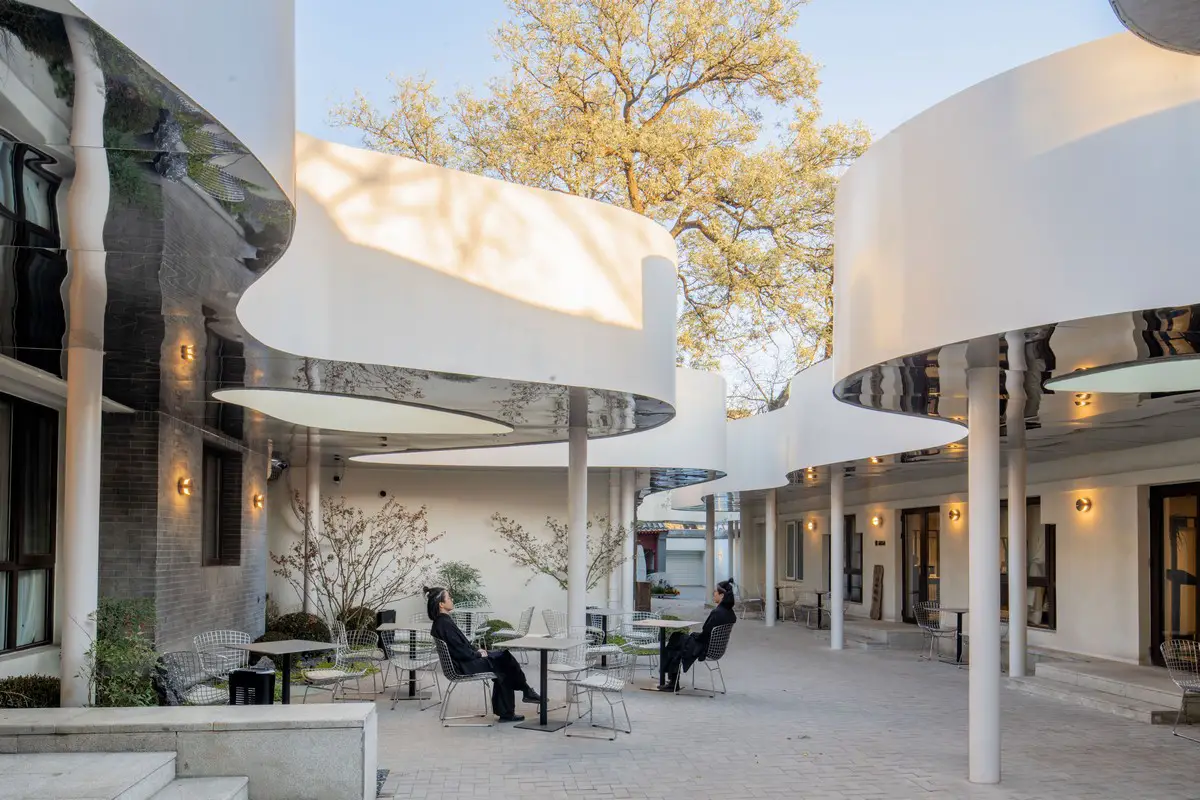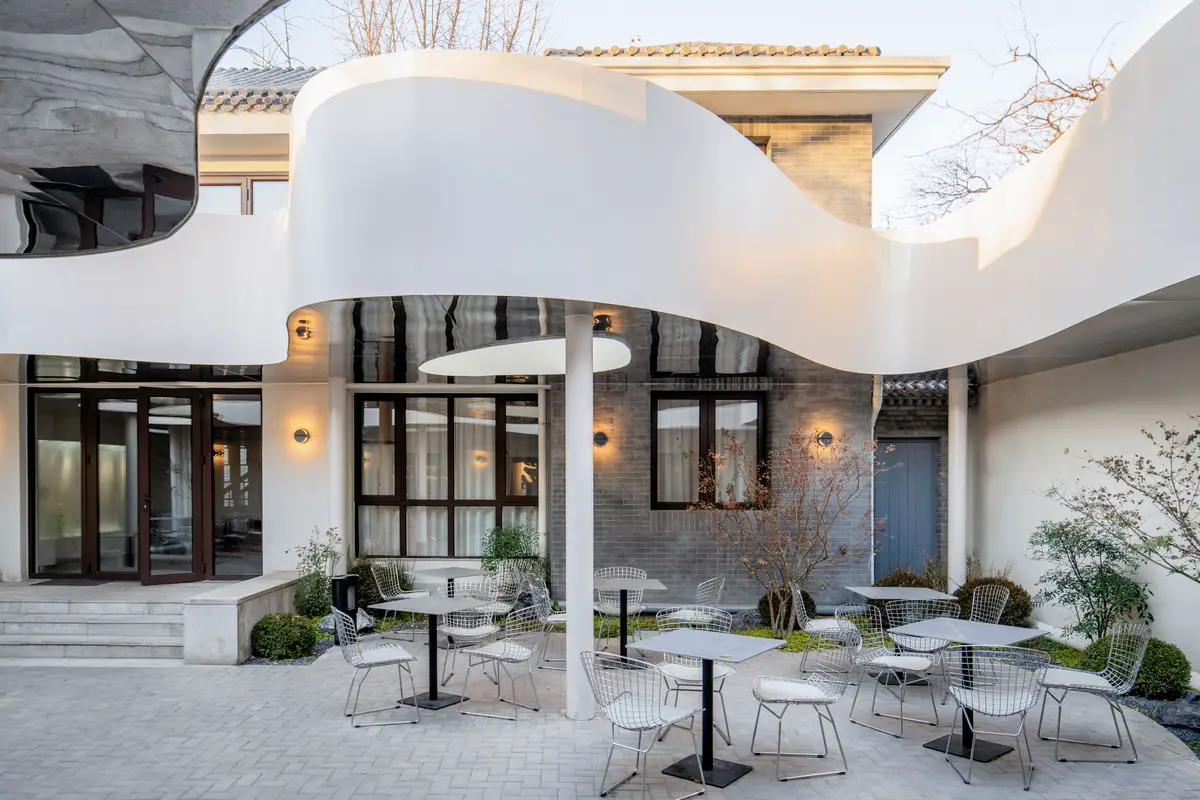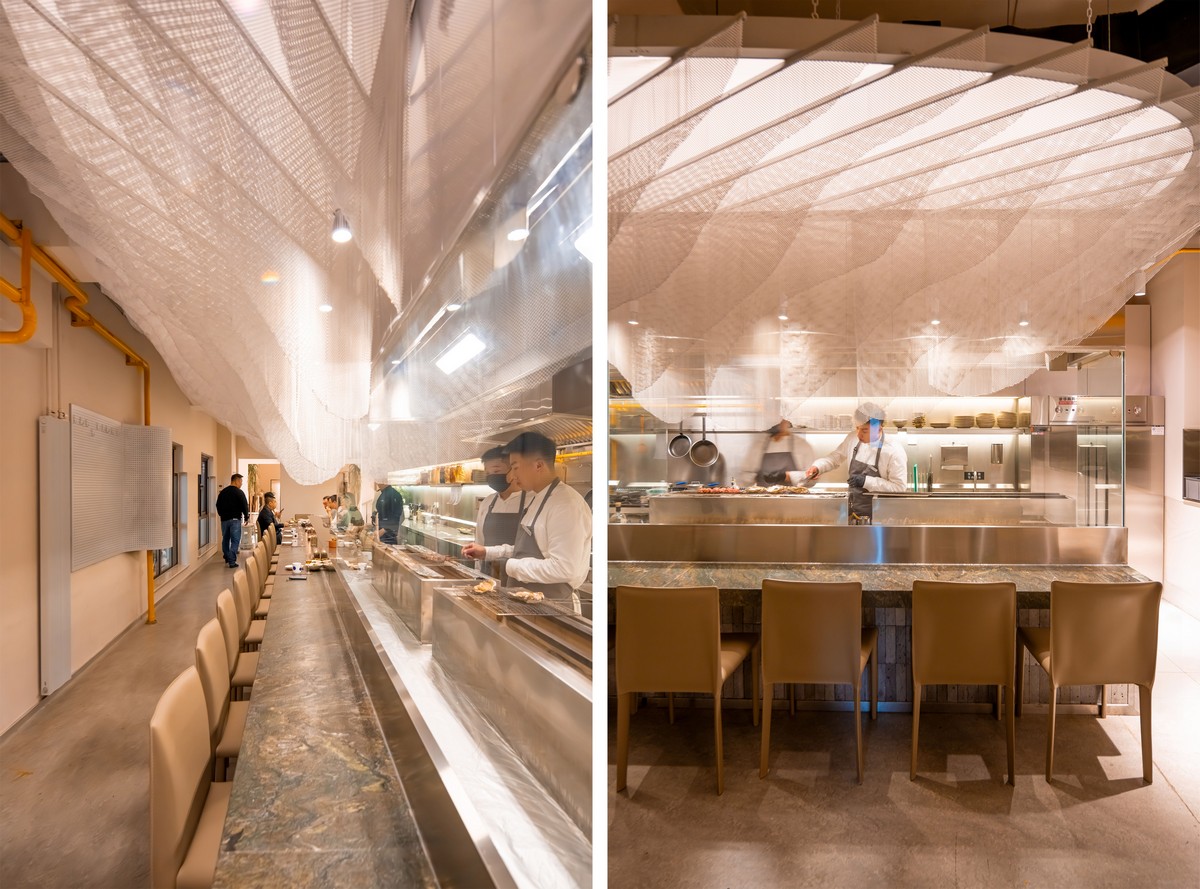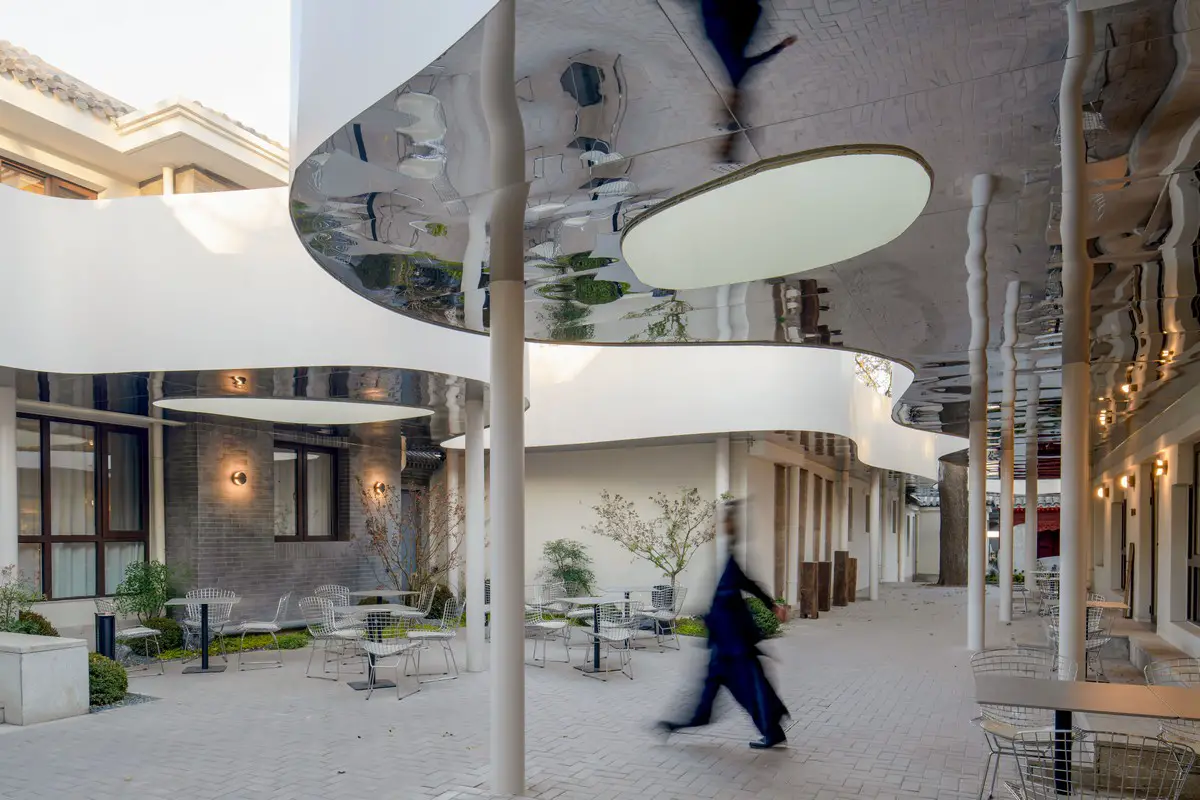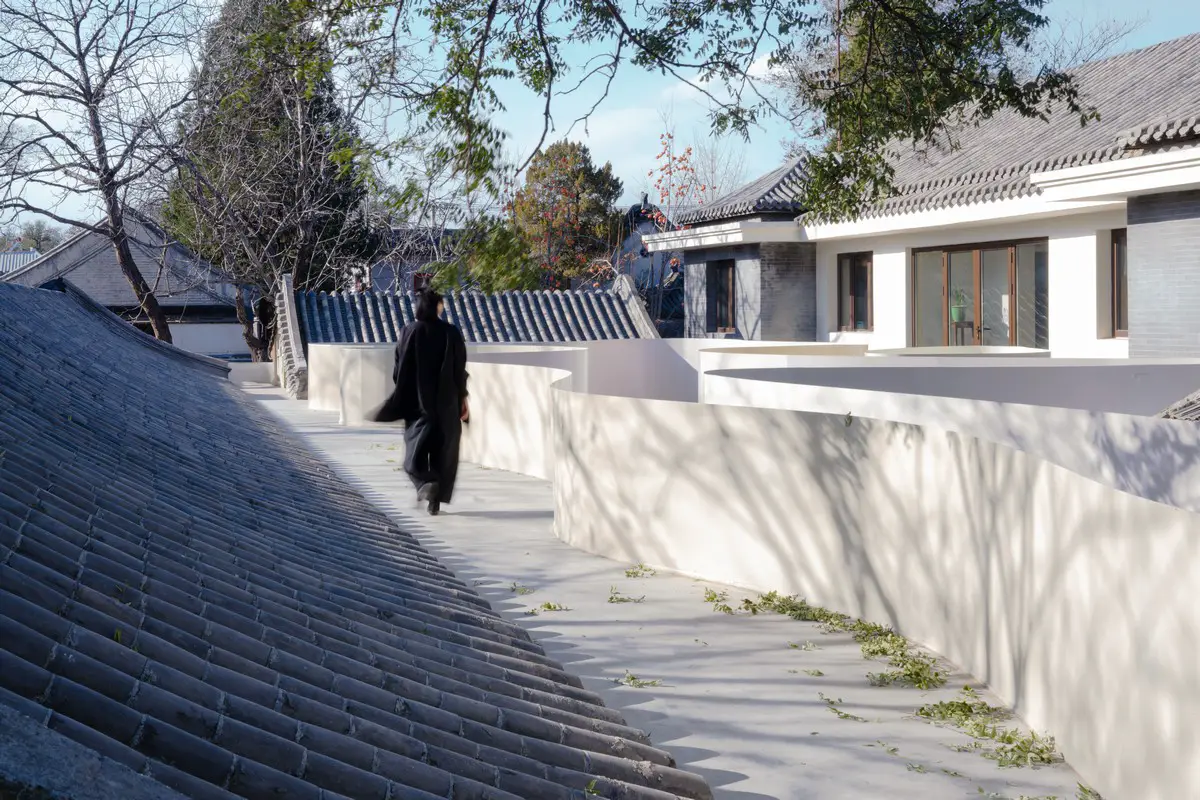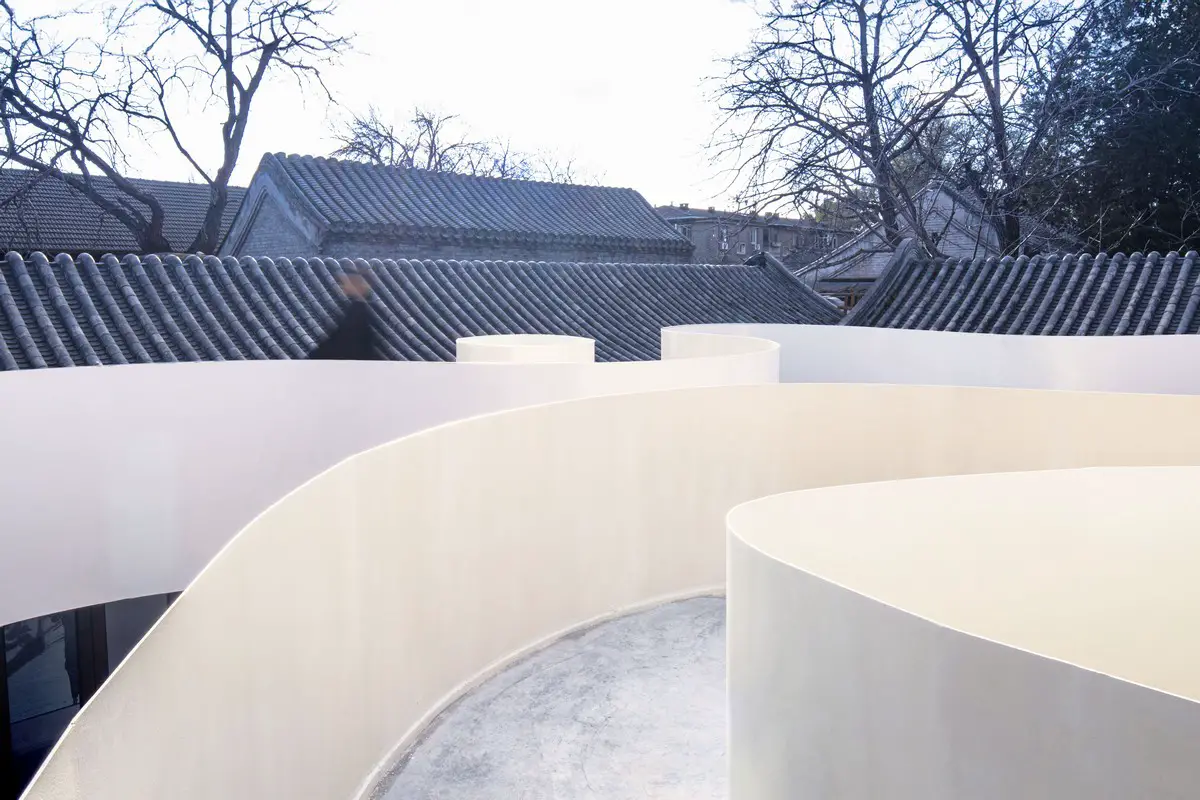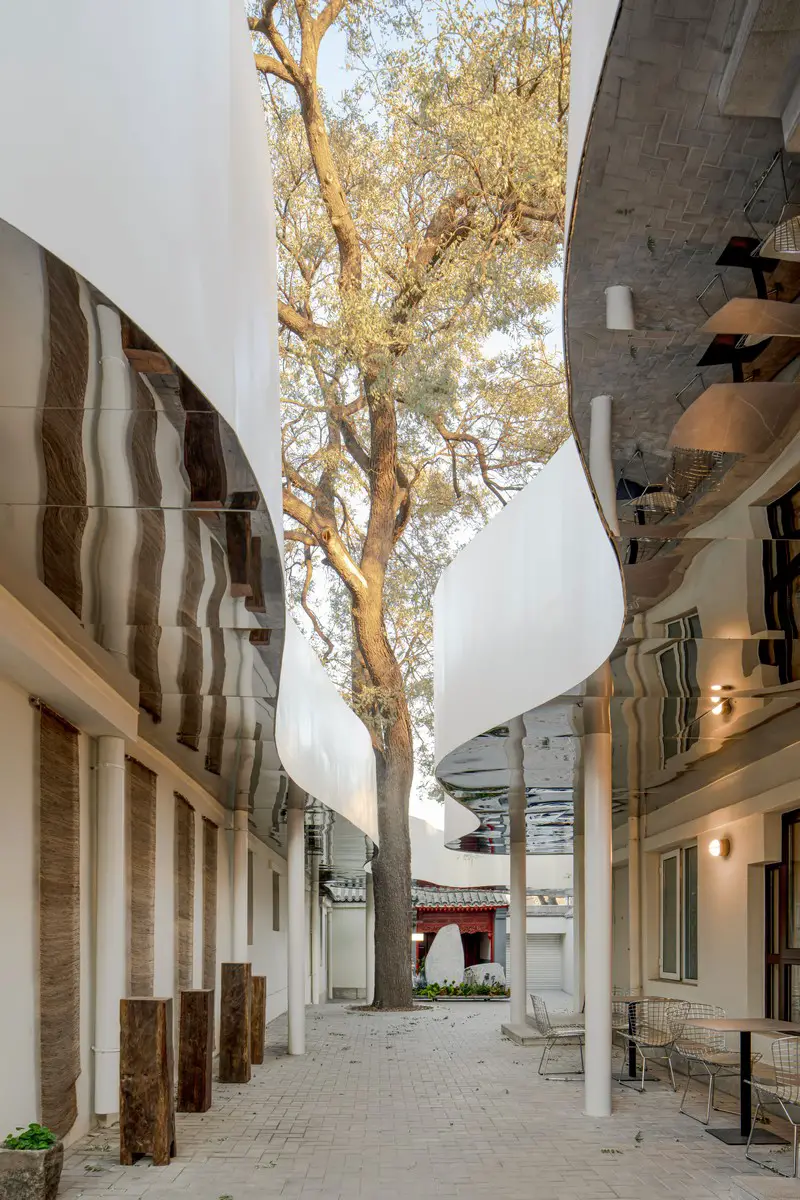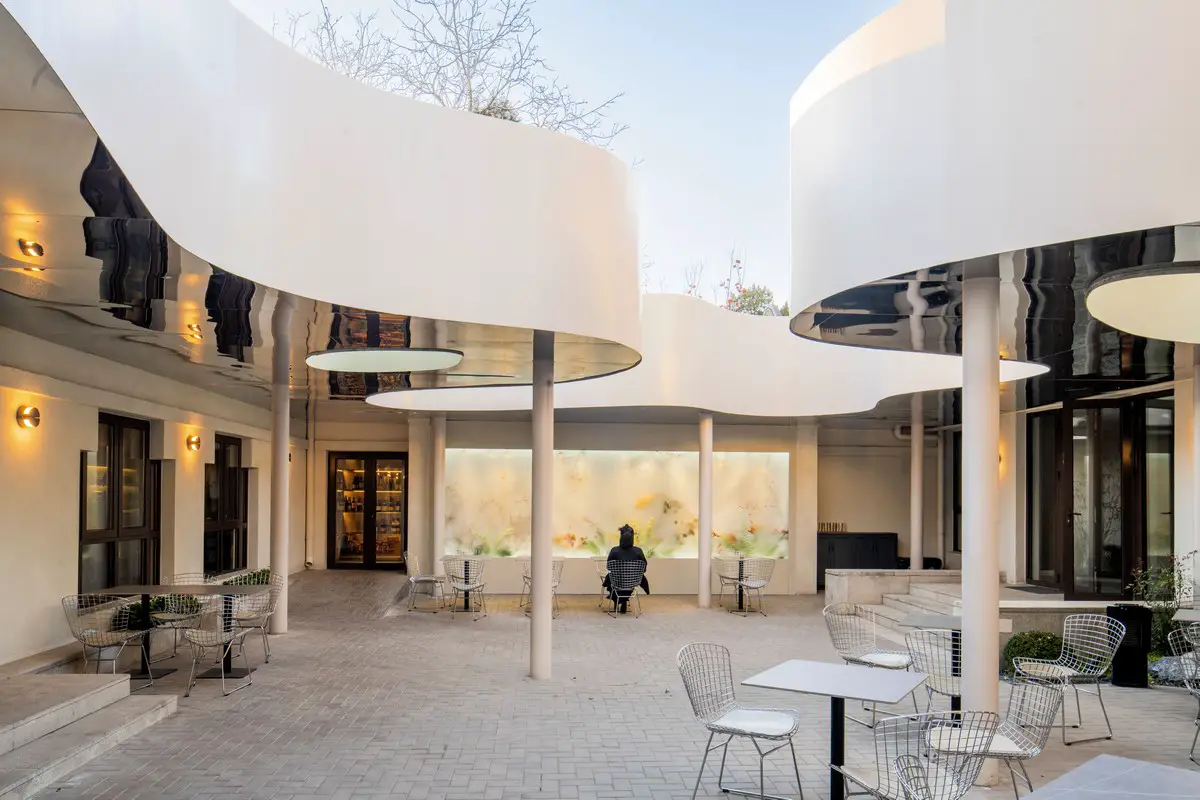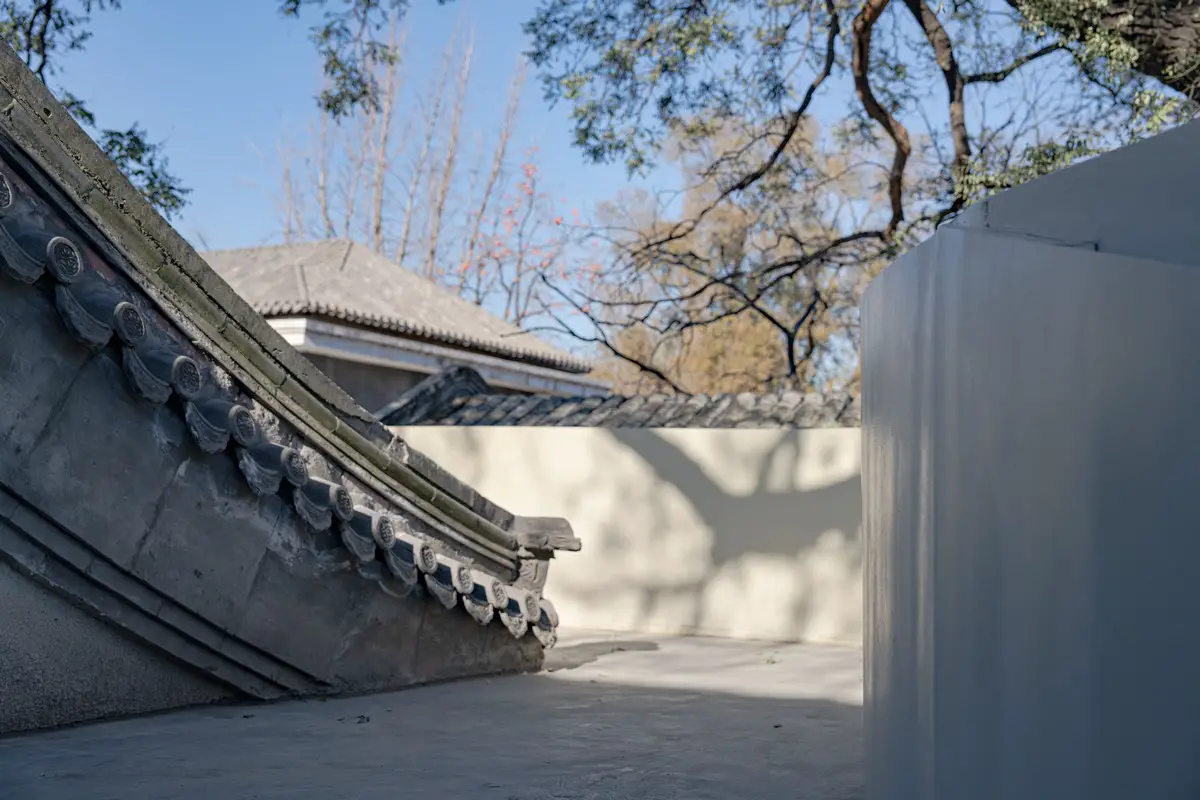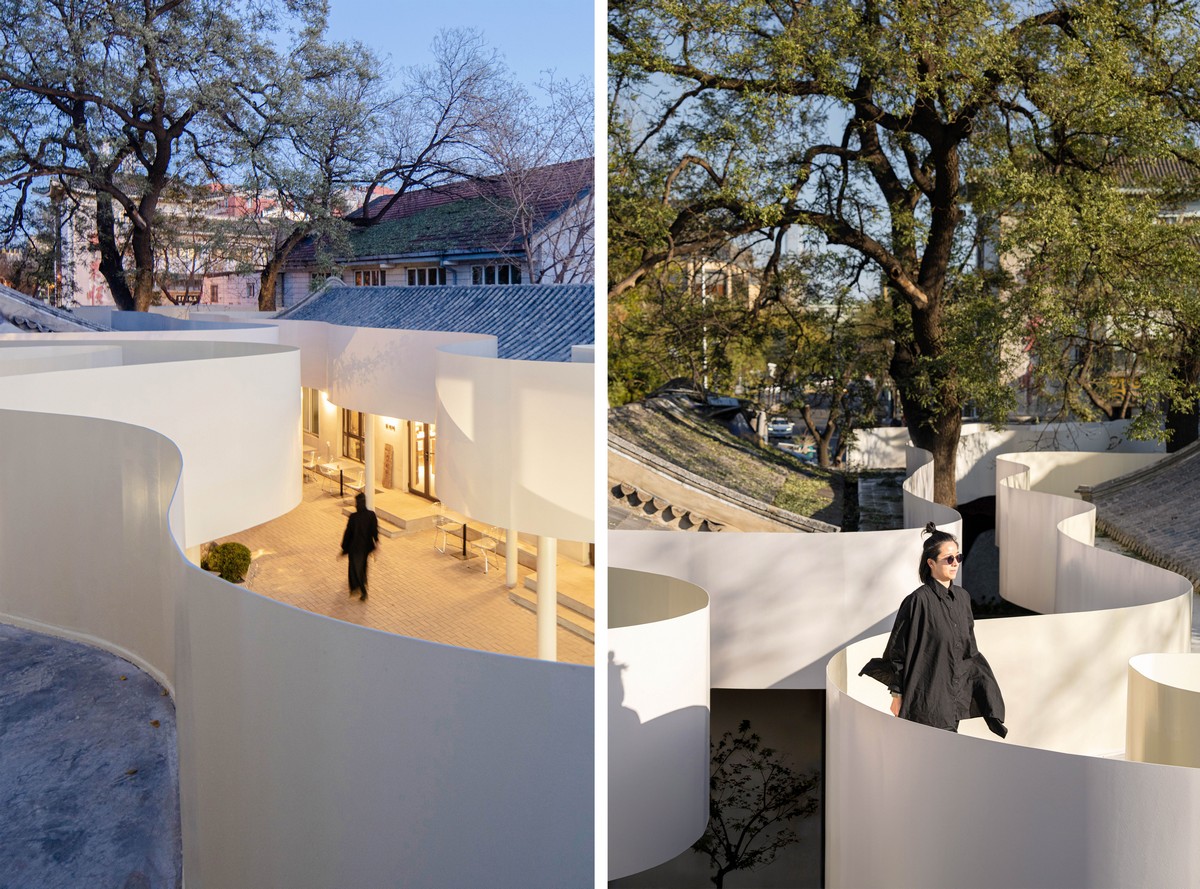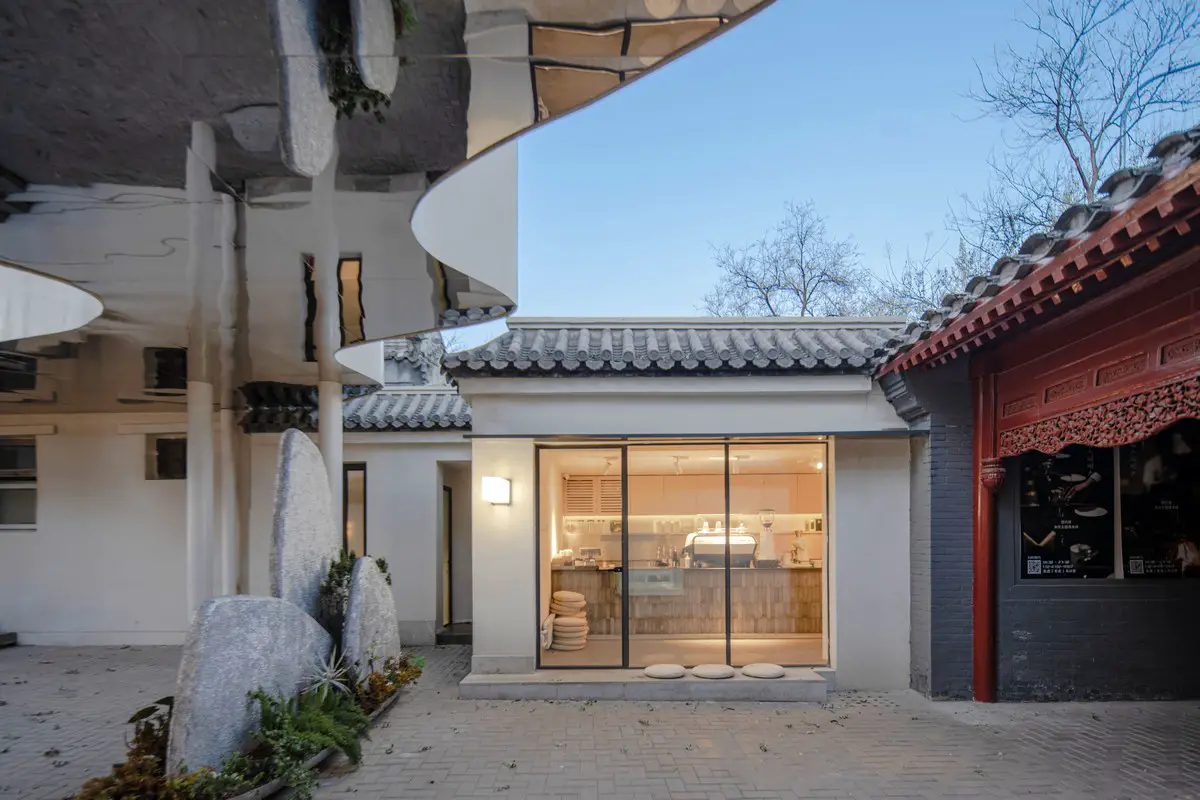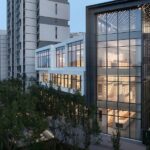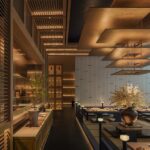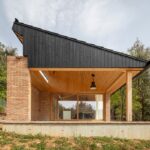Courtyard 35, China, Beijing smart building development, Chinese architecture design images, Norwegian architect
Courtyard 35 in Beijing
8 March 2024
Design: WAY Studio
Location: Beijing, People’s Republic of China
Photos by Yuan Gao
Courtyard 35, China
“A World Apart” – Cloud-bridge transforms Beijing Hutong Courtyard 35
WAY Studio recently designed the renovation of an old and secluded courtyard in the centre of Beijing and transformed it into an urban attraction, incorporating a micro-mixed-use complex. In the design, WAY Studio considers the relationship between old and new, between outside and inside, positive and negative space, to create a cloudscape insertion that mediates the relationship between nature, man, and man-made, in order to emphasize the spatial experience of the void, further enhancing its relationship with its surroundings, and adding to the urban fabric of Beijing.
Something Old, Something New
Creating for the present with consideration of the future and the past.
This project is an exploration of tradition and preservation, the relationship between new and old, the consideration for the present in reference to both the future and the past. We hope to show that preserving Chinese tradition is not simply a replication of existing historical pavilions and towers, but a spirit of innovation that is a journey of discovery and awareness. Therefore, we intentionally created an interplay of old and new within the space.
The project is located in the centre of Beijing, within the immediate surroundings of the imperial palace which would have housed the royal extended family in its midst historically. In the 1990s, after multiple renovations and the expansion of roads, resulting in a smaller isolated irregular courtyard with a mix of old and new decorative styles that lacked unity or purpose, with only the shadows of its previous identity maintained in its spatial sequence. Consequently, just one block away is the central commercial area WangFuJing which is a major bustling hub of the city.
In order to tap into that energy from the new commercial area nearby while mediating its proximity to our historic centre, we focused on the negative space within the courtyard instead of the building itself, and transformed the area into a more urban and public space, creating a natural gathering place within the courtyard. The insertion of the cloudscape bridge reshapes the spatial order and changes people’s preconceptions about how traditional courtyards can be repurposed.
In the transformation of Courtyard 35, we aimed to retain the essence of the courtyard, while redefining the flow of space and incorporating a variety of functional areas. The space transfigures from an originally introverted state, into a small commercial complex accommodating modern functions and aesthetics.
To activate the public spaces deep within the city, the architectural renovation did not alter the original building; instead, the cloud-bridge was added, to “play with the void”. The cloud-bridge itself is an installation piece, not only is it a statement between new and old, it is also a frame providing precious moments with nature in the urban landscape. We have an innate fascination with curves to a certain extent, us also being made of curves, and the organic shapes it creates is what brings us closest to creating nature.
During the renovation process, WAY Studio redefined the skyline of the traditional Siheyuan (courtyards) with a cloud-bridge, forging a new relationship between natural and man-made spaces. Upon entering, the first impression is of a cloud-shaped corridor floating within the courtyard embracing two towering ancient trees. The cloud-bridge is made of twisted mirror images floating above, abstracting the immediate surroundings and offering visitors an unexpected experience. The bridge becomes an extension of the architecture, reorganizing the relationship between building and void, creating grey areas which alters the way the space is navigated.
As the major component of creating an ambiance of otherworldliness, the cloud-bridges give the sense of separating the ground and the “clouds”. Having a higher perspective of the courtyard is a new experience, and the peeking rooftops of the traditional courtyard houses almost like mountain peaks among the clouds.
The cloud-bridges give the sense of separating the ground and the “clouds”
The design integrates the old with the new, preserving the essence of the Siheyuan (courtyard) while introducing contemporary elements that enhance the interaction between the architecture and its users, the architecture and nature, the user and nature. The cloud-bridge not only redefines the architectural landscape but also serves as a medium for social interaction, bringing vitality and a new dimension to the traditional courtyard.
WAY Studio carefully considered the required “core functionalities”, while maintaining a degree of ambiguity in all other common spaces in order to maximize flexibility, achieving spatial sustainability. Striving for an effective mutual use of space. Four key components are hosted within, just within the entrance where the original guard house is located, resides a small coffee and tea shop; within the main body of the courtyard, an exhibition shop and a restaurant bar is located in the south wing, whilst the north wing hosts a VIP room on the ground floor with the second floor being a small Chinese cultural exchange studio.
This design not only respects the nature of space within traditional Chinese architecture but also caters to contemporary needs for cultural activities and social interactions. The integration of these elements within the Siheyuan framework demonstrates a thoughtful approach to preserving cultural heritage while accommodating modern functionalities, providing a perfect space conducive to cultural activities. This approach to design ensures that the Siheyuan remains a relevant and integral part of the community’s social fabric.
The design for Courtyard 35 is also an attempt to explore Chinese aesthetic values, allowing people to break free from the conventional impression of “Chinese space” and instead embark on an imaginative journey, between modern functionality and the abstract and more impressionistic aspects of Chinese aesthetics. Chinese values are honored by the flexibility of the space, where experience and functionality are integrated in a state of fluidity.
The concept to create “a world apart” for Courtyard 35 stems from the Chinese poem of Li Bai – “Inquiries in the Mountains”:
问余何意栖碧山,
笑而不答心自闲。
桃花流水窅然去,
别有天地非人间。
Translated into English, the poem reads:
Why do I reside in the emerald mountains, you ask,
I smile without answer; my heart is at ease.
Peach blossoms drift on flowing waters away,
In a world apart, beyond the human realm.
Sub-Centre Library in Beijing, China – Building Information
Architect: WAY Studio – https://www.way-studio.com/
Function: Mini Mixed-Use
(Coffee&Tea, Restaurant, Chinese Traditional Household Store, Art Gallery, Chinese Studies Studio, Tea Shop)
Address:Beijing, P.R.China
Area:440 sqm.
Height:12 m
Design Team:Zheng Tao, Fernie Lai, Zhang ZeQun, Fang Wen, Wang TianMo, Chen Yu
Contractor: Beijing Helida Building Decoration Engineering Co., Ltd
Project Duration:2022 – 2023
About WAY Studio:
WAY Studio is an innovative architecture and design studio with a focus on coalescing architecture with art and technology. With consideration for artistic representation at its core, WAY Studio has focused on discovering new possibilities through cross-disciplinary collaborations. We are highly experienced in interdisciplinary work alongside artists, designers, consultants, engineers and more, seeking new possibilities in every situation. We are interested in looking towards what is next, to pioneer a new WAY, and to find the balance between people and nature, culture and technology. WAY Studio currently has offices in Beijing, Hong Kong and Vancouver.
Photography: Yuan Gao; Zeng Hao; AkunLee
Courtyard 35, Beijing, China building images / information received 080324
Location: Beijing, China, eastern Asia
Beijing Architecture
Beijing Architecture Walking Tours
WAA Riverside Gastropub Space Design, Chaoyang
Architects: Fon Studio
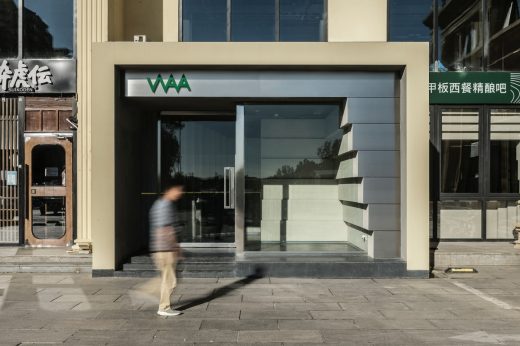
photograph : Fon Studio
WAA Riverside Gastropub, Chaoyang
InterContinental Sanlitun
Architects: CCD/ Cheng Chung Design
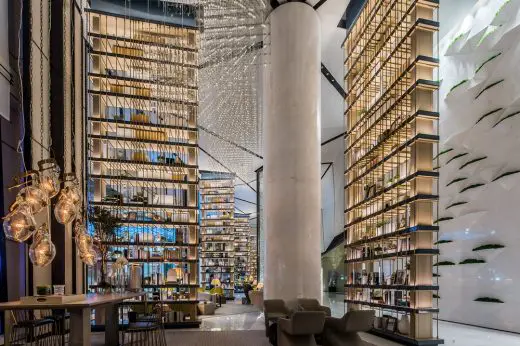
image from architects
751 Fashion Buyer Shop
Design: Zhang Hai’ao (HDD) – Shanghai Huadu Architecture&Urban planning co.ltd
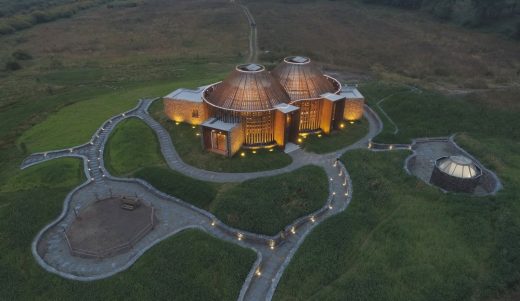
photo : Su Shengliang
Contemporary Library Building Design – article by Adrian Welch
Northern Chinese Architecture
DianDianYiPin tea restaurant
Architects: Golucci International Design
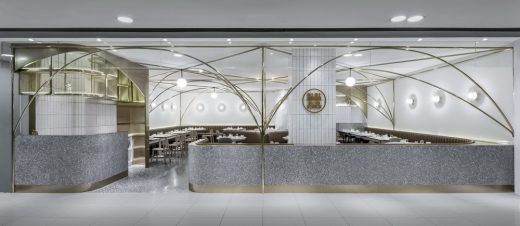
photograph : Lulu Xi
Mini Hill – Lily Nails Salon
Architects: ARCHSTUDIO
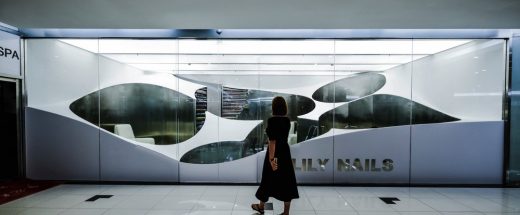
photo © Jin Weiqi
Architecture Walking Tours – city walks
Comments / photos for the Sub-Centre Library, Beijing China designed by WAY Studio page welcome.

